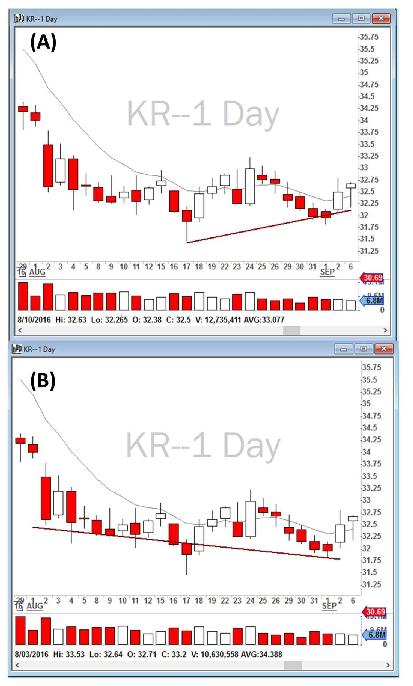Chapter 4:
Support and Resistance Levels
Introduction
For successful trading, you need to be able to identify meaningful and important support and resistance levels for your Stock in Play so you can trade off of them. There are many ways to find these levels and there are many types of support and resistance.
I’ve found over the years that many traders love to draw diagonal trend lines. They’re the most common type of price levels that traders will identify and draw. But I personally believe the market doesn’t know diagonal price levels. In my opinion, diagonal trend lines are subjective and very self-deceptive. You can draw a trend line virtually anywhere and in virtually any way. For example, if you’re in a mood to buy, you can draw your trend line in a way that shows a steep upward movement, while another trader might look at the same chart and draw another trend line with a different slope. If you feel like shorting, you’ll eventually “recognize” and draw a downward trend line for yourself.
I am personally skeptical of trend lines but I know that they are very common among traders. In my opinion most of the trend lines come with some degree of wishful thinking as traders will find themselves identifying bullish or bearish trends depending on whether they’re in a mood to buy or sell.
If you are in the mood to go long, you can draw a line like I did in Figure 4.1 (A). If you are in the mood to short sell, you can draw a line like I did in Figure 4.1 (B) and go short. Do note that Figure 4.1 (A) and (B) are the exact same daily chart but with two quite different diagonal trend lines.

Figure 4.1 - KR daily chart for the summer of 2016. A trend line on the same chart can be drawn whichever way a trader wishes.
For my charts, horizontal support and resistance levels are the only levels I rely on. This is because the market only remembers price levels, which is why horizontal support and resistance lines on previous price levels make sense, but diagonal trend lines don’t. In fact, in my opinion, trend lines are among the most deceptive of all tools in trading. I therefore avoid trend lines.
Many traders may disagree with me here, and they will emphasize the importance of trend lines, triangles, Rising and Falling Wedge Patterns and channels. I must emphasize that what I’ve written about in this book is my style of trading, and while it works very well for me, it might not work for everyone. There is no wrong or right way to trade, and it is important that each trader find their own style of trading. More than anything else, day trading is perhaps most similar to being a professional athlete. Professional athletes each have their own training schedule and process, and no two athletes train in exactly the same fashion.
One professional coach might implement a certain training regimen, while the coach of another team might utilize a completely different system. Both may be correct and produce good results depending on the performance of the athletes on the day of competition. Similarly, you can learn many trading styles, and they all can be right, but the overall results of your trading depend on your daily execution of what you have learned.
Table of contents
- DISCLAIMER:
- Table of Contents
- Chapter 1: Introduction
- Chapter 2: The Trading Tools and Platform
- Chapter 3: Building Your Trading Watchlist
- Chapter 4: Support and Resistance Levels
- Chapter 5: Price Action, Candlesticks and Trade Management
- Chapter 6: Advanced Day Trading Strategies
- Chapter 7: Risk and Account Management
- Chapter 8: Conclusion and Final Words
- Glossary